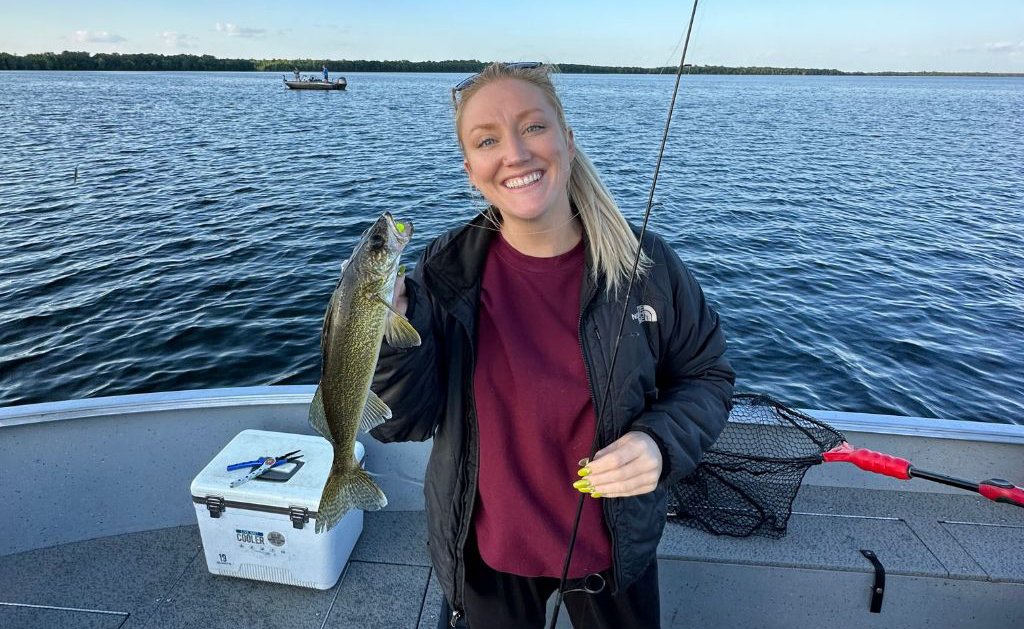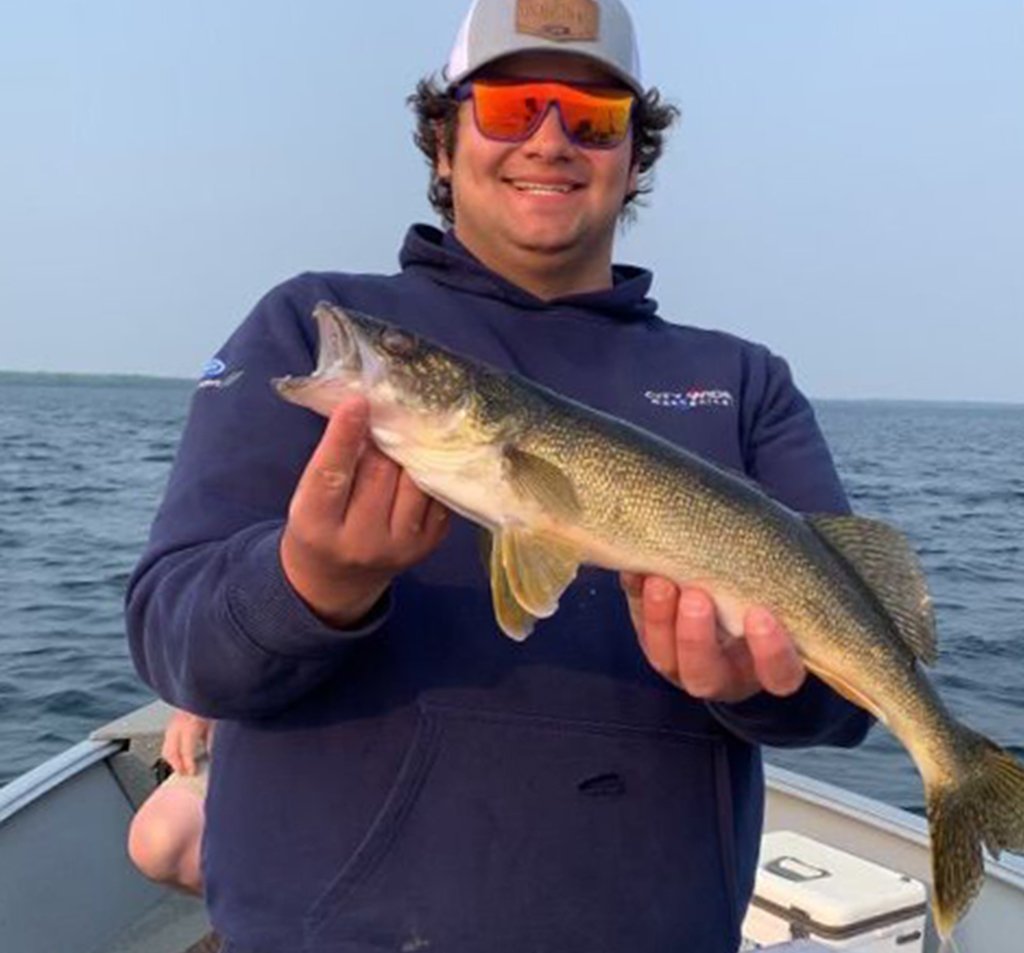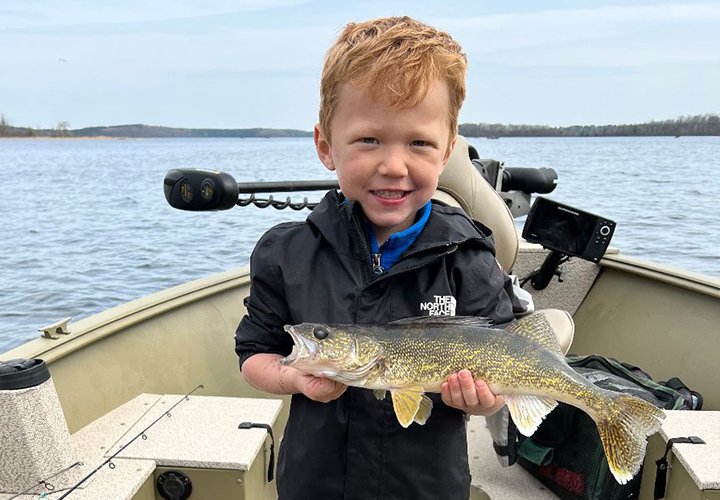After crossing the 80-degree mark, surface water temperatures receded this week. Water temperatures are now registering in the 70 to 72 degree range, and the combination of moderating air and surface water temperatures, along with a stabilized weather pattern helped make this week a good one for fishing on Lake Winnie.
Our guests and friends visiting the lake reported good catches of walleye on the big lake, and for anglers “in the know”, panfish and bass action on the Cutfoot Sioux chain of lakes.
Some of you may recall the Ojibwe translation for the name Lake Winnibigoshish; “Filthy Water”. These days, that name describes the complete opposite of what Winnie’s water looks like. Zebra Mussels, Faucet Snails, and cleaner, clearer water flowing in from flowages have transformed the formerly stained water lake into one that features gin clear water.
We’ve issued numerous reports in recent years about fishing “The New Winnie”, and offered solid tips on how to approach walleye presentations that work with, not against, the clear water conditions. This summer, we’re seeing evidence that many anglers have taken those tips to heart. They have adapted to the clear water and their creels, filled with walleyes, offer proof that the adaptations have been effective.
Fishing the twilight period, for example, is one of the key adaptations. Formerly reserved for sitting by the campfire, fishing at sunset has now become very popular with our guests. They’ve experienced the transformation from lethargic, daytime feeding patterns to aggressive, even gluttonous at times, walleye feeding behavior during the crepuscular feeding periods. Our guide, Jared Saufferer says; “The bite continues to be strong, especially during the twilight hours. Most fish are coming out of the 10 to 18 marks on gravel or rocks.”
Jig and minnow, a longtime crowd pleaser on Winnie, continues to provide results, but these days, we’re seeing more folks fishing with slip-floats. Position fishing, parking the boat and casting out and away from is also fast becoming a mainstay presentation. Folks have figured out that at times, walleyes will disperse when a boat passes overhead. Fishing underneath the boat, especially during calm periods, can feel like a waste of time because the fish are simply not there. But often, they don’t move far from the boats path, so casting and retrieving lures allows anglers to reach unsuspecting fish, and they do bite!
Whether you’re using a jig and minnow, a slip float, or artificial lures, keep your offering a good distance away from the boat. Retrieve your jigs using a “drop-hop-drop-hop” presentation, waiting between hops to feel the fish pick up your lure. Using slip-floats, use small, 1/16-ounce jigs to present lively leeches or ½ night crawlers. To improve castability, add split shot sinkers about 1 foot above your jig. Here’s an important tip to remember, set your float to hold your bait above the fish’s line of sight. It is much easier to entice a fish to swim up for your bait, than to swim down for it. Ideal height for slip float fishing is 18 to 24 inches about the bottom, even higher when fish are feeding aggressively.
Walleye location is still focused primarily on shoreline related structures, but it is shifting slowly. Fish have been moving slowly across sprawling flats on both the north and west sides of the lake. Pushing toward the lake’s mid-section could be an indication that we’re on the verge of seeing insects hatching. So far, we have not witnessed any large-scale hatches of mayflies or the smaller fish flies. There have been smaller, isolated hatches of other bugs, and perch appear to be keying in on some of them.
Panfish are feeding on insects now too, especially sunfish. They’ve largely fishing spawning and are showing up on the outer edges of cabbage and coontail flats, in areas adjacent marly bottom, clam beds. Spinners tipped with night crawlers can get you zeroed in on sunfish location, and once found, small jigs tipped with cut leeches or night crawlers will improve efficiency.
Crappies are on the prowl, but like walleyes, prefer to feed during twilight periods. Early risers will enjoy great fishing for them if they’re on the lake at sunrise. On Cutfoot, casting small jigs tipped with action tails like ripple shads, mister twisters or beetle spins will produce crappies. Treat yourself to a multiple species morning by casting your lures into the pockets and gaps between the vegetation. Let your lure fall into the pockets on a tight line and feel for any “pop” at the tip of your fishing rod. Crappies, sunfish, walleyes, bass, and pike will strike at random intervals. Rock Bass, not often talked about, but fun to catch are still in spawning areas, so you’re liable to catch some of them too.
Northern pike are still largely being caught as a byproduct of walleye fishing. Jigging often discourages the largest fish, but anglers looking to improve the size should experiment with spinners. For walleyes, it’s a bit early to make a full-scale switch over trolling with spinners, but the pike are striking them. You’ll catch some walleyes along the way too, maybe some panfish too, so don’t be afraid to experiment.
Perch are where you find them, random catches come and go on a daily basis. So far, there does not appear to be a solid, uniform feeding pattern that gathers and holds them in large numbers. Our best advice for locating them is to watch for gravel, especially when vegetation is present. The combination of woody cover and gravel is a common preference.
As summer fish migrations toward mid-lake structure progress, anglers should begin experimenting with fishing on the bars and humps. On overcast days, especially with moderate breezes, fish have been showing up in some, but not all of the more popular mid-lake spots. On clear days, the fish do not hold to the edges of bars and humps. Moving out and away from the structures often puts them in water that’s too deep for safely releasing these fish. On sunny days, we suggest keying in on the twilight periods instead.
Tomorrow will be the Musky fishing opener and we’re curious to see how much attention trophy hunters pay to Winnie. Anglers casting large baits may begin to encounter larger pike and that could be a focus of next week’s report.
If you’re headed for the lake this weekend, good luck and remember, you’re always welcome to stop in to launch your boat, or for a chat.

























